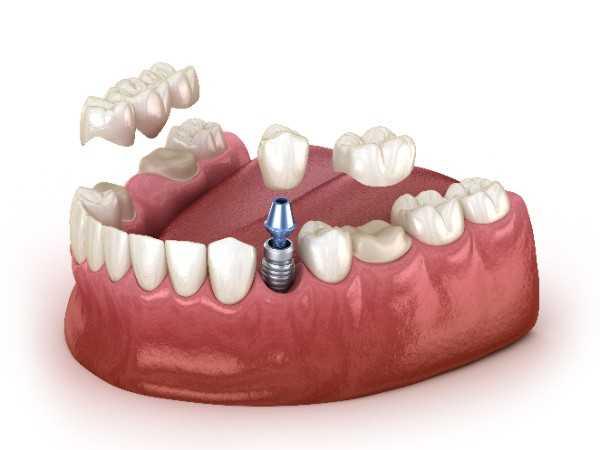Tracking the Longevity of 3D-Printed Dental Implants

A confident smile relies not only on aesthetics but also on long-term functionality and stability. With continuous innovations in digital dentistry, 3D-printed dental implants have emerged as one of the most advanced solutions for restoring missing teeth. These custom-engineered restorations combine precision technology with durable materials to deliver exceptional comfort, strength, and longevity. As patient expectations for permanent, natural-looking results rise, understanding the lifespan and success factors of these implants becomes increasingly important.
Understanding 3D-Printed Dental Implants
3D-printed dental implants are created through a fully digital process that tailors each implant to the individual patient’s anatomy. Unlike prefabricated implants, which come in standard shapes and sizes, these implants are custom-made using advanced imaging and computer-aided technology.
Here’s how the process works:
- Digital Imaging: High-resolution scans, including cone beam computed tomography (CBCT), capture detailed information about the patient’s bone structure.
- Design Stage: Computer-aided design (CAD) and manufacturing (CAM) software convert the scan data into a precise 3D model of the implant.
- 3D Printing: Using selective laser sintering, titanium powder is fused layer by layer to create a patient-specific implant.
- Finishing and Polishing: The implant is refined and sterilised before being surgically placed.
This level of precision allows dentists to achieve optimal anatomical fit, stability, and integration. It has also expanded possibilities for patients who previously lacked sufficient bone for traditional implants, as seen in procedures like subperiosteal dental implants Liverpool, where customised frameworks fit over the jawbone instead of being embedded within it.
The Science Behind Longevity
The long-term success of 3D-printed dental implants lies in both their material composition and engineering design.
1. Material Strength
Titanium, the material used in most 3D-printed implants, is renowned for its:
- Biocompatibility, reducing the risk of allergic reactions.
- Corrosion resistance, which ensures long-term durability.
- High tensile strength, allowing it to withstand the forces of chewing and biting.
2. Surface Architecture
3D printing allows for the creation of a micro-textured surface that promotes osseointegration, the process where bone tissue grows and bonds directly with the implant surface. This stable fusion ensures the implant functions like a natural tooth root.
3. Precision Fit
Because the implant is custom-designed, stress distribution across the bone is even, reducing the likelihood of micro-movements or implant fatigue over time.
Together, these factors contribute to implants that last decades, with proper care and maintenance.
Clinical Evidence and Long-Term Performance
Long-term clinical studies have shown outstanding outcomes for 3D-printed titanium implants. In most cases, they achieve success rates exceeding 95% over a 10-year period, rivalling or even surpassing conventional implant systems.
Some observed outcomes include:
- Improved bone preservation, thanks to reduced surgical trauma.
- Stable integration even in compromised bone conditions.
- Minimal mechanical wear, ensuring sustained comfort and stability.
Additionally, patients report enhanced confidence, improved chewing ability, and aesthetic satisfaction due to the implants’ natural fit. For individuals with severe bone loss who undergo treatments like Dental Implant Liverpool solutions, the benefits are particularly transformative, offering both structural and visual restoration.

Key Factors Influencing Implant Longevity
While material quality and technology play crucial roles, several other factors determine how long a 3D-printed implant will last.
|
Factor |
Impact on Longevity |
|
Bone Quality |
Stronger bone ensures better primary stability and integration. |
|
Implant Design |
Customisation reduces stress points, improving long-term success. |
|
Surgical Accuracy |
Guided digital placement minimises trauma and error. |
|
Aftercare and Hygiene |
Regular cleaning and check-ups prevent peri-implantitis. |
|
Lifestyle Habits |
Smoking, bruxism, and poor diet can shorten implant life. |
Patients who adhere to professional maintenance schedules and adopt good oral hygiene practices tend to experience significantly better longevity outcomes.
Comparing 3D-Printed and Conventional Implants
To understand the real advantage of 3D-printed implants, it helps to compare them directly with traditional implant systems.
|
Aspect |
Conventional Implants |
3D-Printed Implants |
|
Design |
Prefabricated, limited sizing |
Fully customised for each patient |
|
Fit and Stability |
May require bone grafting |
Perfect anatomical match, no grafts needed |
|
Healing Time |
6–12 months typical |
Shorter recovery due to minimal bone trauma |
|
Durability |
10–15 years average |
20+ years potential lifespan |
|
Comfort and Functionality |
Standardised fit |
Feels natural and stable |
This comparison illustrates why 3D printing is redefining implantology by merging precision engineering with biological harmony, these implants deliver a long-term, comfortable solution.
Clinical Insights and Real-World Success
Across dental practices and hospitals, clinicians have reported consistent success with 3D-printed titanium implants. Key takeaways from long-term studies include:
- Sustained bone density around the implant site even after several years.
- Minimal implant loosening or mechanical failures due to superior load distribution.
- High patient satisfaction rates, particularly among those with complex bone structures.
For many, especially those who undergo treatments like Subperiosteal Dental Implants Liverpool, 3D technology has opened new doors to full oral rehabilitation, restoring not only their smile but also their confidence and quality of life.
Innovations Enhancing Implant Longevity
The future of 3D implantology looks even more promising, with several emerging trends enhancing both performance and lifespan:
- Bioactive Surface Coatings: These stimulate faster osseointegration and tissue healing.
- Hybrid Titanium-Polymer Materials: Combine rigidity with flexibility for improved shock absorption.
- AI-Assisted Implant Design: Predicts bite force distribution and stress points to prevent failure.
- Nanostructured Surfaces: Encourage better cell adhesion and long-term stability.
- Smart Digital Workflows: Enable same-day implant design, printing, and placement, reducing treatment time.
As these technologies mature, patients will benefit from faster healing, stronger integration, and even greater implant durability.
Patient Benefits and Practical Outcomes
From a patient’s point of view, the advantages of 3D-printed dental implants extend well beyond durability.
Key patient benefits include:
- Comfort: Perfect anatomical fit ensures natural movement and speech.
- Aesthetics: Custom contouring restores symmetry and facial balance.
- Faster Recovery: Digital planning reduces surgical trauma.
- Reliability: Long-lasting results with fewer adjustments.
- Confidence: Improved self-image and overall wellbeing.
Patients treated with advanced dental implant Liverpool systems often experience life-changing transformations, regaining both the functional and emotional aspects of a healthy smile.

Conclusion
3D-printed dental implants have transformed modern dentistry by delivering unmatched precision, strength, and longevity. Their ability to integrate seamlessly with the jawbone, maintain long-term stability, and provide natural aesthetics makes them a game-changer for patients seeking durable restoration solutions. With ongoing research and innovation, these implants are set to redefine the future of restorative dentistry, ensuring patients enjoy not just a beautiful smile, but one built to last a lifetime.
At Smilo Dental Implant Liverpool, patients receive expert-led care powered by advanced 3D technology, ensuring every restoration is designed for comfort, precision, and lifelong confidence.



